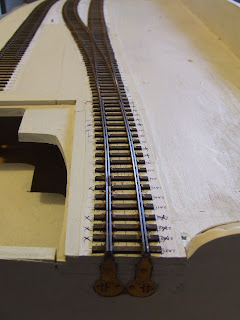I'm just starting to realise that this might not have been the case with these older refitted non-vacuum braked GWR wagons. My understanding is that they were initially built
with DCII non-vacuum brake gear with both the brake handles at the opposite
end to the end door. After 1939, conversion to Morton brakes was initiated to
conform to the 'right-handed' ministry rules (though possibly not to all as
I've seen a photograph of one preserved at Brewdley with DCII brake gear).
My
problem is, was the DCII brake gear replaced with 2 shoe, 4 shoe, or 4 shoe
independent Morton brake gear? If either of the first two which side was the clutch,
handle towards the end door, or towards the fixed end? Looking again at the few
references I have, and photographs I have since found on the web, it would seem
that they had 4 shoe independent brake gear. Some photographs however are not
clear and are confusing me slightly. So I'm wondering if there could have been
a variation of brake gear fitted to these wagons.
I’m starting to think (partly as an excuse
to my possible mistake) that, as St. Blazey wagon works repaired these older GWR wagons, there could well have been a variation in brake gear fitted. That said I
would like to have the majority of these wagons fitted with the most common type of brake gear that they were equipped with. Though I will probably also include at least one
with DCII just to 'tip my hat' to the heritage of these wagons.
I’ve posted requests for further
information on a couple of forums. In the meantime, while I wait for
confirmation/criticism of my thoughts, these wagons will be put to one side.















